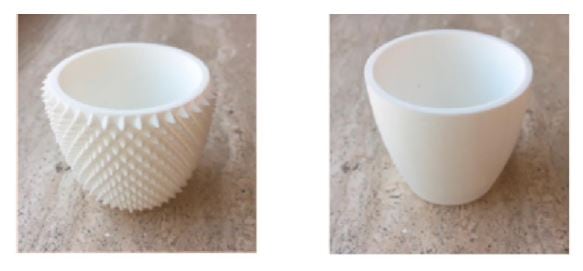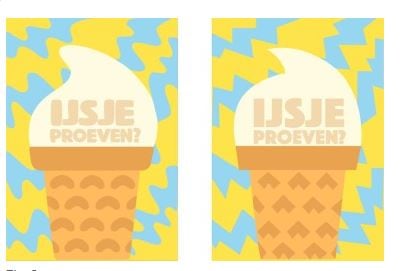The Dutch-Korean collaboration, which use 3D printing techniques to produce the surface textures of a food’s packaging, also suggest these designs may enhance product liking for the consumer.
“As costs associated with 3D printing will continue to drop in the years to come, and the quest for differentiation and a unique positioning in the marketplace will continue,” said the research team, led by Dr Thomas J.L. Van Rompay, associate professor of design at the University of Twente.
“Furthermore the feasibility of varying 3D textures creates opportunities for research, where ‘new’ tactile factors are combined with equally advanced means for product promotion in consumption and retail environments abound.”
The use of 3D printing techniques to produce unique packaging design is an area of food innovation overshadowed by how visual appearances steer sensory impressions such as smell and taste.
For the research that has been carried out, results testify to the potential of shaping food experiences through look and feel properties of packaging design.
Yogurt taste associated with an angular, rather than a rounded, package was evaluated as stronger and more intense.
A follow-up study showed that when such angular elements are embedded in surface textures, bitterness ratings were enhanced for participants who tasted coffee from a sample cup with an angular (as opposed to a rounded) texture.
Study details

Here, researchers from the University of Twente and the Korea Advanced Institute of Science and Technology (KAIST) 3D-printed two cups, one with a sharp, spikey surface texture, the other with a smooth, even surface.
In addition, a set of four posters, each presenting either sharp or smooth shapes (i.e., eight posters in total), were presented to 17 participants who rated the poster designs on the extent to which they were considered fitting the verbal labels ‘sweet’ and ‘sour’
The tasting part of the experiment enrolled 176 customers, who were asked to look at the posters, after which they were given vanilla ice cream or sorbet (dairy-free) lemon ice cream presented in the 3D-printed sharp or smooth container.
After tasting, the subjects were asked to fill out the survey asking them about perceived sweetness and sourness, taste intensity and overall liking of the product.
Influencers of sweet and sour taste

Results confirmed there was a real possibility of influencing taste evaluations by serving food in various surface textures.
A smooth surface appeared to enhance sweetness evaluation, whilst a sharp surface enhanced the intensity of the taste in question.
In addition, the results suggested that unusual pairings between surface textures and poster design could increase the liking for a product’s taste.
“These findings clearly stress the feasibility of shaping specific taste sensations and enhancing food experiences through the interplay of surface textures and poster design,” the authors said.
“Admittedly, the interactive effects (suggesting that incongruence between poster and cup may enhance taste and product liking) were relatively weak (as evidenced by follow-up pairwise comparisons),” they added.
The team argued that inconsistencies created through design factors are subtler and thus were easier to ‘resolve’ compared to inconsistencies demonstrated by slogans.
“One way to understand this difference is to distinguish between consumer-generated impressions generated by visual design cues (such as the shapes in the present study) and meanings enforced through slogans or claims,” they said.
Source: Food Quality and Preference
Published online ahead of print: doi.org/10.1016/j.foodqual.2018.02.015
“The sweetest punch: Effects of 3D-printed surface textures and graphic design on ice-cream evaluation.”
Authors: Thomas J.L. Van Rompay, Lisa-Marie Kramer, Daniel Saakes
